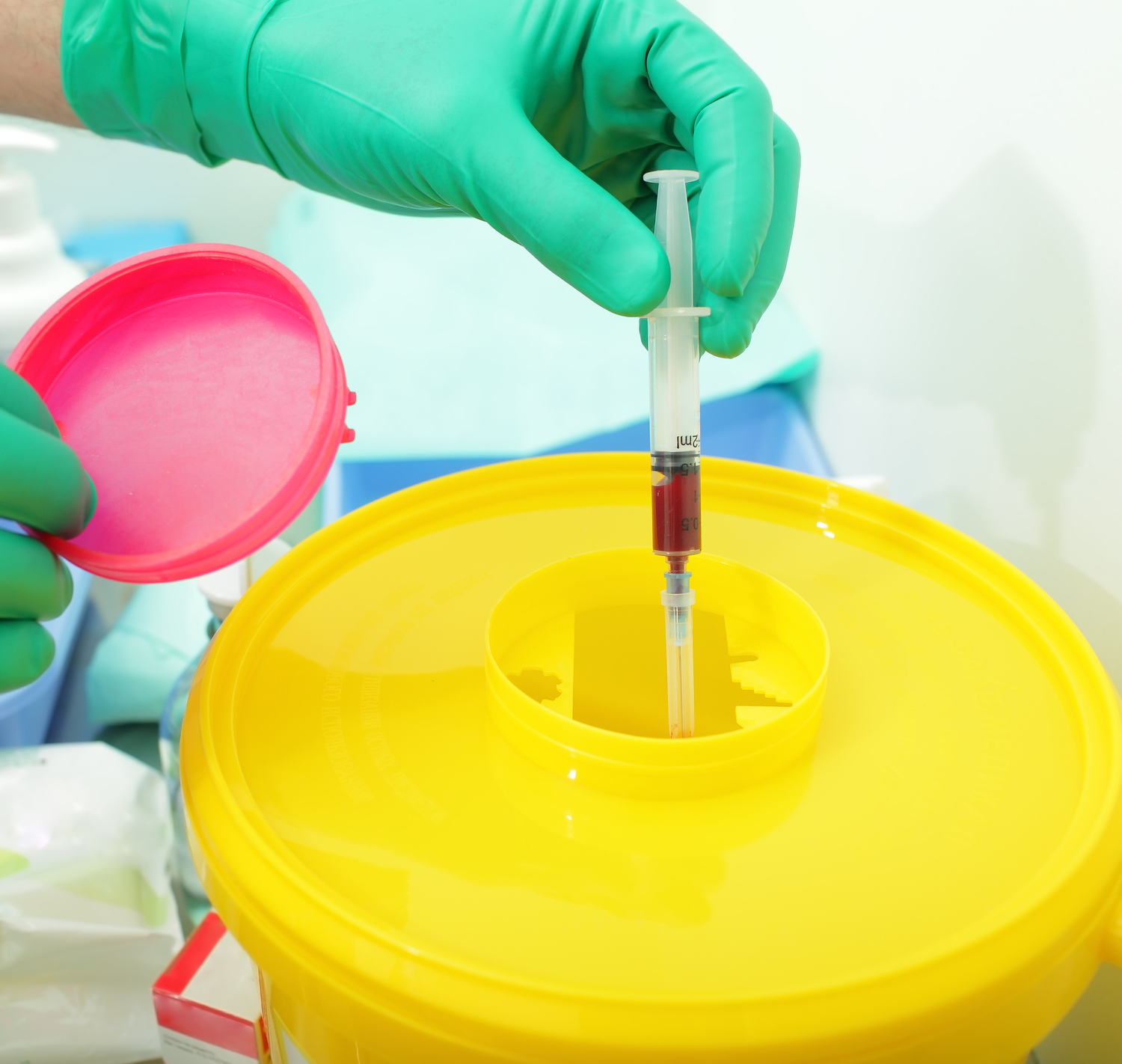
Medical Waste: Types and Safe Disposal
Medical waste, according to the United States Code, include any waste products that could potentially infect others. These are infectious agents, pathological wastes, surgical/hospital waste, contaminated laboratory wastes, chemotherapy agents, and other kinds of waste, which were generated through diagnosis and treatment or immunization of human humans or animals. These wastes can be dangerous in nature, especially for the employees that dispose of them, which is why medical waste generators are required to perform proper waste collection and disposal methods. Medical waste falls largely under the following four categories:
- General medical waste covers paper, plastic, and other office waste, which don’t require special handling.
- Infectious medical waste poses risk of infection to humans, animals, and the environment and includes sharps waste, human cultures, swabs, or body parts (i.e., surgical waste), and blood-soaked bandages.
- Hazardous medical waste is deemed dangerous but is not infectious to humans and may include sharps waste, chemotherapy agents, and chemicals (i.e., lead, solvents, mercury from thermometers).
- Radioactive medical waste is waste from radioactive therapies (i.e., nuclear medicine, thallium stress tests, etc.).
Depending on the medical waste category, the following safety and disposal practices apply:
1. Incineration
Medical waste incineration is usually used on pathological and pharmaceutical wastes. The labeled wastes are incinerated in a temperature about 1,000-degree celsius in order to burn the toxic exhaust gases. A large number of pharmaceutical wastes are recommended to be incinerated at high temperatures (1,200-degree celsius). It is reported that almost 90% of medical wastes are being incinerated. Today, incinerators are known to be much cleaner than before.
2. Autoclaving
Autoclaving is used when the medical wastes to be treated are sharps and infectious wastes. What destroys the microorganisms is saturated steam and pressure. Sharps, sharps containers, scalpels, and other medical tools are usually autoclaved to be sterilized (devoid of pathogenic qualities) and recycled. Although most medical waste can be treated via autoclaving, it cannot treat chemotherapy agents, pharmaceutical and chemical wastes. After the autoclave process, the wastes are usually shredded and are compacted after cooling down.
3. Chemical Degradation
Chemical Degradation is used on blood and other fluid wastes from that come from the body of a human or an animal or often called as Cytotoxic wastes. Regulations don’t allow disposal of these fluids to landfills and sewerage systems. By Chemical Degradation, cytotoxic compounds are converted into non-toxic or non-genotoxic compounds. However, the method will not work on wastes and biological fluids that are contaminated by antineoplastic agents.
4. Through Irradiation
Irradiation is usually used for sharps and its containers. What happens during irradiation is that syringes and its containers are exposed to gamma rays that are fatal to bacteria. The radiation method used is the same thing being used in cancer treatments. However, instead of killing malignant cells, the radiation is used to kill pathogens. Irradiation is a cheaper alternative to incineration but requires a specialized location.
5. Vitrification
Wastes that are processed using Vitrification are usually allowed to be landfilled. This method is rarely used because the other methods are more efficient and have a bigger scale. What happens is solid wastes are transformed into glass. pathogens are killed because of high temperature and is encased by the glass that is poured into it. Vitrification is used for nuclear wastes and is only one to make disposal easier.


